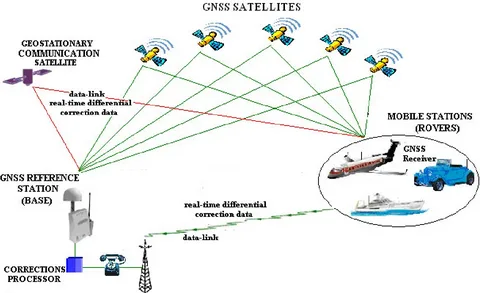In recent years, agriculture has undergone a technological transformation. At the heart of this evolution is the integration of satellite-based navigation systems, most notably the Global Navigation Satellite System (GNSS). This technology is reshaping how farmers plan, monitor, and manage their operations. Let’s explore how GNSS is revolutionizing precision agriculture and what it means for the future of farming.
What is GNSS?
GNSS refers to a constellation of satellites that provide global positioning and navigation data to receivers on the ground. Systems like the U.S. GPS, European Galileo, Russian GLONASS, and China’s BeiDou are all part of the GNSS framework.
In agriculture, GNSS enables real-time location tracking and accurate positioning of farming equipment, often with sub-meter or even centimeter-level precision when combined with correction technologies like RTK (Real-Time Kinematic) and PPP (Precise Point Positioning).
The Role of GNSS in Precision Agriculture
1. Improved Field Mapping and Planning
With GNSS, farmers can create highly accurate maps of their fields, including topography, soil variability, and crop health zones. These maps are essential for developing targeted planting and treatment strategies, reducing input waste, and increasing yield.
2. Guidance and Auto-Steering Systems
Modern tractors and combines equipped with GNSS-based guidance systems can follow precise paths across the field, reducing overlaps and missed spots. This ensures uniform application of seeds, fertilizers, and pesticides, enhancing efficiency and lowering costs.
3. Variable Rate Technology (VRT)
GNSS enables Variable Rate Technology, which allows equipment to adjust the application rate of inputs like fertilizer and water based on exact location. This means farmers can treat different parts of the field according to their specific needs, promoting sustainability and productivity.
Benefits to Farmers and the Environment
One of the biggest advantages of how GNSS is revolutionizing precision agriculture is the significant reduction in resource usage. By applying the right inputs in the right places, farmers not only save money but also minimize environmental impacts. Additionally, the data collected can support better decision-making for future planting cycles.
The Future of Farming with GNSS
As GNSS technology continues to evolve, its integration with AI, IoT sensors, and autonomous machinery will push precision agriculture even further. Future developments may include fully automated farms, real-time crop health monitoring, and predictive analytics powered by satellite data.
The ongoing advancements in how GNSS is revolutionizing precision agriculture indicate a shift toward smarter, more sustainable food production systems.
Conclusion
The impact of GNSS on farming is undeniable. From optimized resource use to improved crop yields, the benefits are vast and growing. Understanding how GNSS is revolutionizing precision agriculture is essential for anyone involved in modern farming. As technology advances, GNSS will continue to be a cornerstone of efficient, sustainable agricultural practices.


